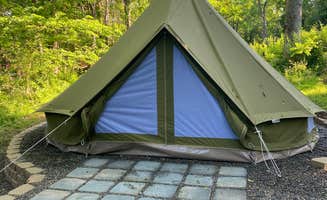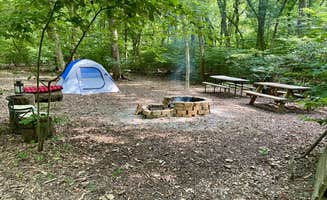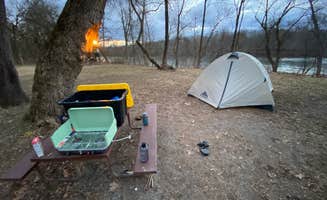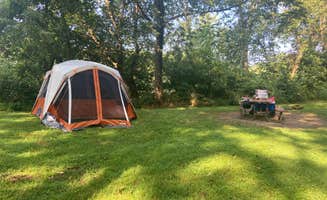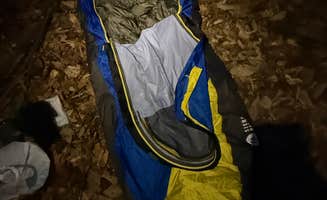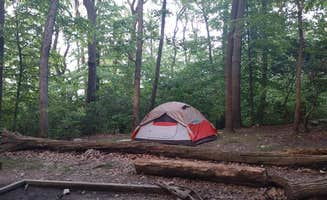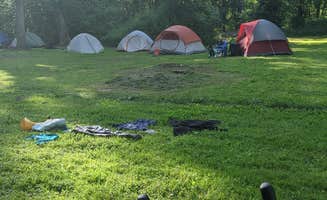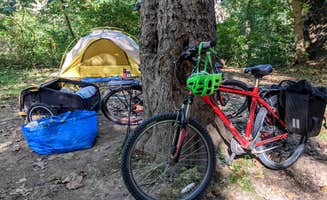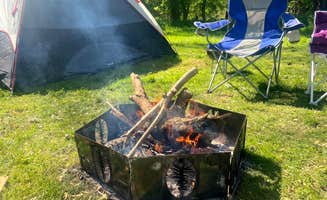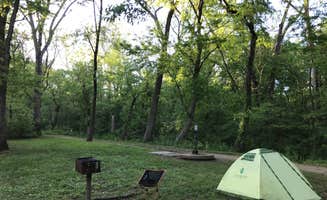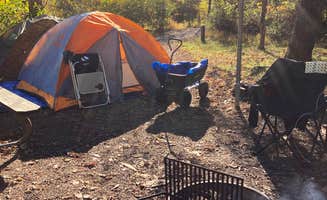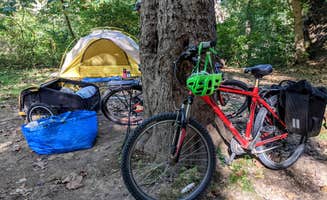Tent camping near Fairplay, Maryland centers primarily along the Potomac River corridor and Appalachian Trail, with sites situated between 300-1,700 feet elevation. Most locations fall within the boundaries of the Chesapeake and Ohio Canal National Historical Park, creating a unique camping experience where hikers, cyclists, and river enthusiasts frequently cross paths. Summer temperatures typically reach 85-90°F with high humidity while spring and fall bring more moderate conditions.
What to do
Potomac River swimming: At Jordan Junction Hiker-biker Campsite, campers can cool off during summer months. "Want to rinse off? Jump into the Potomac for a swim," notes ant S., who appreciated the basic amenities at this stopover point.
History exploration: Washington Monument State Park offers easy access to the first monument built to honor George Washington, constructed in 1827. The park connects directly to the Appalachian Trail for day hiking options.
Rock climbing: The cliffs at Annapolis Rock Campground provide various single-pitch routes for climbers. "Rock climbing available," confirms CHRISTOPHER B., who rated the area 5 stars, noting the "short walk to Annapolis rock" where climbing opportunities exist.
Trail cycling: The C&O Canal towpath runs parallel to many campsites, creating a flat, gravel cycling route. Bring repair kits as bike shops are limited between trail towns.
What campers like
Trail access: Most tent sites in the region connect directly to major hiking routes. "Backpacking campground just off the AT. Moderate difficulty 2+ mile hike from Route 40," says Bob S. about Dahlgren Backpacker Campground, highlighting its accessibility.
River views: Many campers note the tranquility of riverside locations. "Gorgeous spot just off the trail and 50 meters from the Potomac," writes Emerson K. about Opequon Junction.
Basic facilities: Campers appreciate functional amenities at primitive sites. "Good site, has the necessities. Water, Porta p, fire pit. What else do you really need?" remarks ant S. about Jordan Junction's simple setup.
Social atmosphere: The linear arrangement of many campsites creates community. "It is nice if you're a social camper, we got to talk to many people and also got to enjoy a nearby camper playing his violin as the sun was setting," Casey L. notes about Antietam Creek.
What you should know
Site privacy varies: Many campgrounds feature open layouts with limited separation. "All the sites are very open and run along the multi-use trail. People are constantly walking, running, and biking by," warns Casey L. about Antietam Creek Campground.
Bathroom conditions: Facilities at primitive sites require appropriate expectations. "When we got there, they were okay, but by the 3rd night they were really gross. We were at the site next to them and could smell them," Casey L. continues about Antietam Creek's facilities.
Gear carry-in required: Most sites require some walking from parking areas. Nick C. explains at Antietam Creek Campground: "You have to park on the road and walk about 75 feet to your site."
Fire restrictions: Several areas prohibit campfires due to conservation efforts. "You can't have a campfire due to restorations," notes Sy A. regarding Annapolis Rock.
Tips for camping with families
Wildlife awareness: Educate children about local wildlife before arrival. "Be careful for the copperheads that come warm up on the rocky overlook," warns Sy A. about Annapolis Rock Campground.
Trail difficulty: Consider hiking distances when planning with children. Bob S. notes that Annapolis Rock requires a "Moderate difficulty 2+ mile hike from Route 40," which may challenge younger children.
Site selection: Choose sites closer to bathroom facilities when camping with kids. At Gathland State Park, Emerson K. found it "felt safe and had a great time," making it suitable for family outings.
Pack-in water: Not all sites have reliable water sources. "Spring and compost outhouse," mentions Bob S. about Annapolis Rock, indicating limited water access.
Tips for RVers
Limited RV options: The region primarily offers tent-only sites with minimal RV accommodation. Most established campgrounds require walk-in access and cannot support vehicles at sites.
Alternate parking: RV travelers should consider parking at designated trailheads and day-use areas, then backpacking to campsites. "You have to park on the street, cross the bridge over the C&O and towpath, and then down a little hill to your site," explains Michelle N. about the setup at Mulehalla, which offers some vehicle access points.
Cell service considerations: Connectivity varies significantly throughout the region. "I have Verizon and had better service by my car on the road than at the actual campsite. At the site I could make calls but couldn't check the internet," notes Michelle N.


